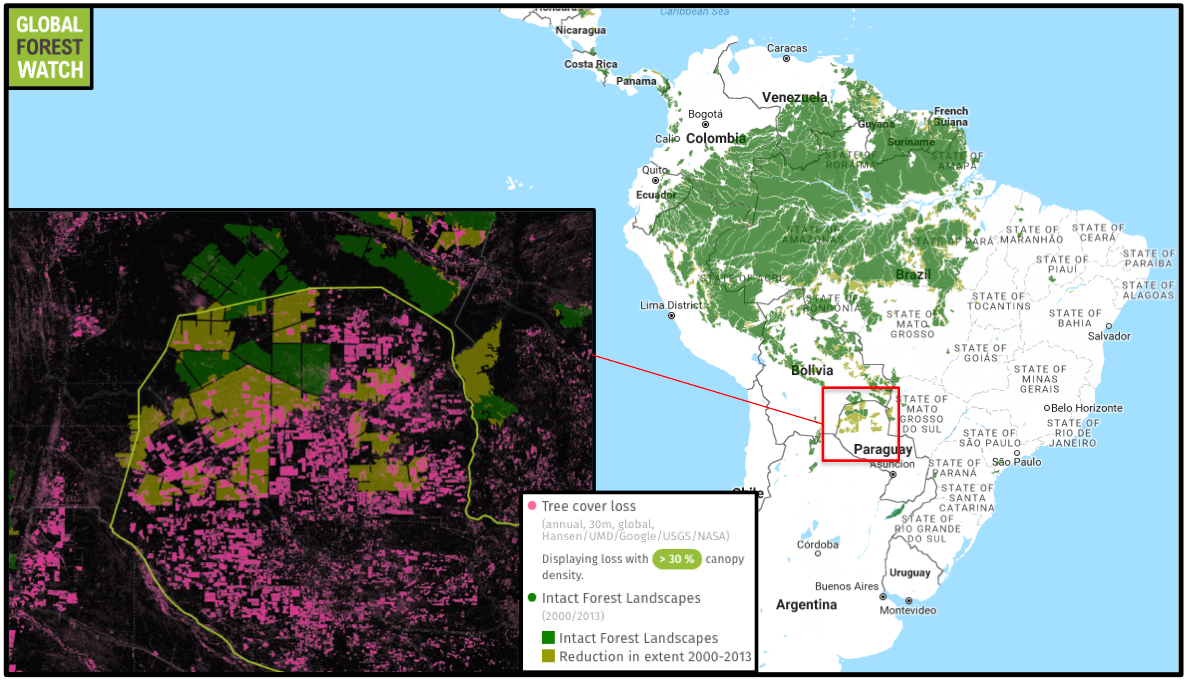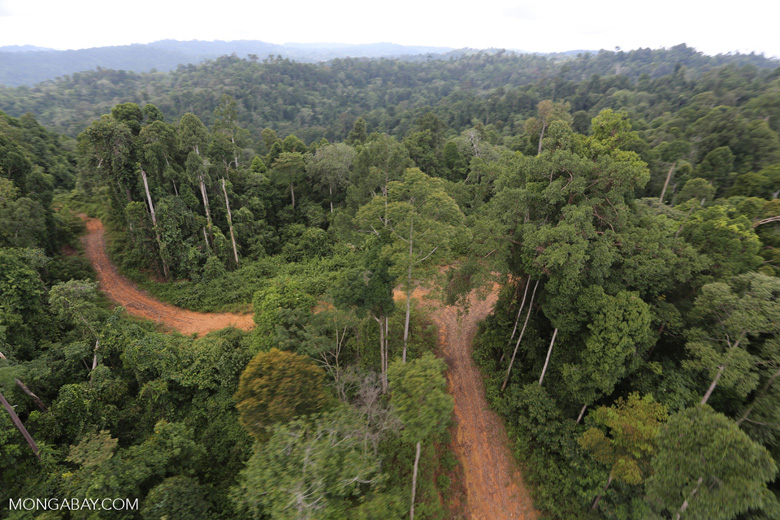- Overall, the world lost more than 7 percent of its intact forest landscapes in just over a decade, a trend that appears to be accelerating.
- A new study discusses how intact forests are critically important for mitigating climate change, maintaining water supplies, safeguarding biodiversity and even protecting human health.
- However, it warns that global policies aimed at reducing deforestation are not putting enough emphasis on the preservation of the world’s dwindling intact forests, instead relying on a one-size-fits-all approach that may end up doing more harm than good.
- The researchers urge more inclusion and prioritization of intact forests in global commitments and policies aimed at curbing deforestation.
When it comes to habitat quality and ecosystem services, research has shown that natural landscapes do it best. A new study, published today in Nature, adds fodder to this argument, describing how intact forests are critically important for mitigating climate change, maintaining water supplies, safeguarding biodiversity and even protecting human health. However, it warns that global policies aimed at reducing deforestation are not putting enough emphasis on the preservation of the world’s dwindling intact forests, instead relying on a one-size-fits-all approach that may end up doing more harm than good.
Intact forests are large areas of connected habitat free from human-caused disturbance. From the Amazon rainforest in South America to the taiga that rings the Arctic, the Earth’s intact forests provide a diverse array of unbroken habitats for many – if not most – of the planet’s terrestrial wildlife.
But intact forests are disappearing. An analysis released last year found that, overall, the world lost more than 7 percent of its intact forest landscapes in just over a decade, a trend that appears to be accelerating. Zooming in, the analysis reveals bigger losses for specific regions: 10.1 percent in Africa, 13.9 percent in Southeast Asia, nearly 22 percent in Australia. At the country level, Paraguay came out particularly bad, losing almost 80 percent of its intact forest landscapes between 2000 and 2013.

The driving force behind these losses varies depending on location, but agriculture, logging and road building are global heavy-hitters. And the disturbance doesn’t need to be big in size to have a big impact; research has shown even small logging roads can open up a “Pandora’s box” of destructive repercussions that can threaten the integrity of a once-untouched forest. Such seemingly small, localized deforestation activities have resulted in a situation where the world’s forests have essentially been cut up into an estimated 50 million fragments – which scientists think is closing in on a tipping point at which forest fragmentation may dramatically accelerate.
In response to intact forest losses, researchers at institutions around the world teamed up to synthesize hundreds of previous studies and figure out just how important these forests are and how best to protect them on a global scale.
They found that despite their reduction, intact forests currently absorb around 25 percent of the world’s human-generated carbon emissions and are thus playing a big role in offsetting global warming. According to their study, intact forests sequester more carbon than logged, degraded or even planted forests. In addition to the direct removal of trees, human encroachment also opens up forests to hunters; the researchers write that as hunters remove animals from a forest, the trees that depend on these animals to spread their seeds may not be able to reproduce, which could in turn affect how much carbon a forest is able to store.
In addition to affecting the global climate, intact forests may also help regulate local and regional climates. Research indicates that when intact forest is cleared or degraded, cloud cover is reduced and droughts are more likely to happen. Studies also show that non-degraded forests are better at holding water in the soil, as well as stabilizing slopes and preventing erosion. This, the researchers write, may help ensure water security for local and Indigenous communities.
Intact forests are also better at providing habitat than those that have been degraded. Studies have shown intact forests host more wildlife, and their loss correlates with the retreat or even the extinction of forest-dependent species. Along with reducing a forest’s biodiversity, research indicates degradation can also affect the overall functioning of its ecosystems.

The authors of the new Nature study write that despite the wealth of research on the benefits of intact forests and the consequences of their degradation, international policies aimed at reducing deforestation do not sufficiently prioritize their conservation. They write that efforts like the United Nations’ Sustainable Development Goals, which seek to sustainably manage forests, fight desertification and halt land degradation and biodiversity loss, stand to fall short of their targets if they don’t do more to address the importance of preserving intact forests.
Specifically, the authors write that many of these global initiatives focus too much on forest extent and not enough on its condition, effectively lumping all forest cover into one conservation category.
“As vital carbon sinks and habitats for millions of people and imperilled wildlife, it is well known that forest protection is essential for any environmental solution–yet not all forests are equal,” James Watson of the Wildlife Conservation Society (WCS) and the University of Queensland said in a statement. “Forest conservation must be prioritized based on their relative values–and Earth’s remaining intact forests are the crown jewels, ones that global climate and biodiversity policies must now emphasize.”

Watson and his colleagues warn that if international policies and agreements don’t make more of an effort to prioritize intact forests, then they stand to disappear – and with them, important reservoirs of biodiversity and one of the world’s biggest carbon sinks.
“Even if all global targets to halt deforestation were met, humanity might be left with only degraded, damaged forests, in need of costly and sometimes unfeasible restoration, open to a cascade of further threats and perhaps lacking the resilience needed to weather the stresses of climate change,“ said Tom Evans, WCS Director of Forest Conservation and Climate and joint lead author of the study.
“This is a huge gamble to take, for conservation, for climate change, and for some of the most vulnerable human communities on the planet,” Evans said.
Mongabay reached out to the offices overseeing the UN Framework Convention on Climate Change, UN Sustainable Development Goals and Intergovernmental Panel on Climate Change, but received no response by press time.
In their study, Evans, Watson and their colleagues put forth several recommendations to fill what they see as a gap in international policy. First, they urge the creation and standardization of metrics to measure forest intactness, which would help prioritize action to areas that are the most intact. They write that the intact forest concept should also be embedded in reports produced by the UN Framework Convention on Climate Change and the Intergovernmental Panel on Climate Change. This, they say, will help ensure that the international commitments supporting the Paris Agreement will include and prioritize the conservation of intact forests.
The researchers also urge support for efforts on both the global and local scale that seek to limit road expansion, regulate hunting and extractive activities like mining and logging, invest in protected areas, and help attain land rights for Indigenous communities. They write that degraded forests should be restored and made more productive rather than opening up intact forests to human activity.
“Our research shows that a remedy is indeed possible, but we need to act whilst there are still intact forests to save,” Evans said.
Citation:
James E. M. Watson, Tom Evans, Oscar Venter, Brooke Williams, Ayesha Tulloch, Claire Stewart, Ian Thompson, Justina C. Ray, Kris Murray, Alvaro Salazar, Clive McAlpine, Peter Potapov, Joe Walston, John G. Robinson, Michael Painter, David Wilkie, Christopher Filardi, William F. Laurance, Richard A. Houghton, Sean Maxwell, Hedley Grantham, Cristián Samper, Stephanie Wang, Lars Laestadius, Rebecca K. Runting, Gustavo A. Silva-Chávez, Jamison Ervin, David Lindenmayer. The exceptional value of intact forest ecosystems. Nature Ecology & Evolution, 2018; DOI: 10.1038/s41559-018-0490-x
FEEDBACK: Use this form to send a message to the editor of this post. If you want to post a public comment, you can do that at the bottom of the page.
